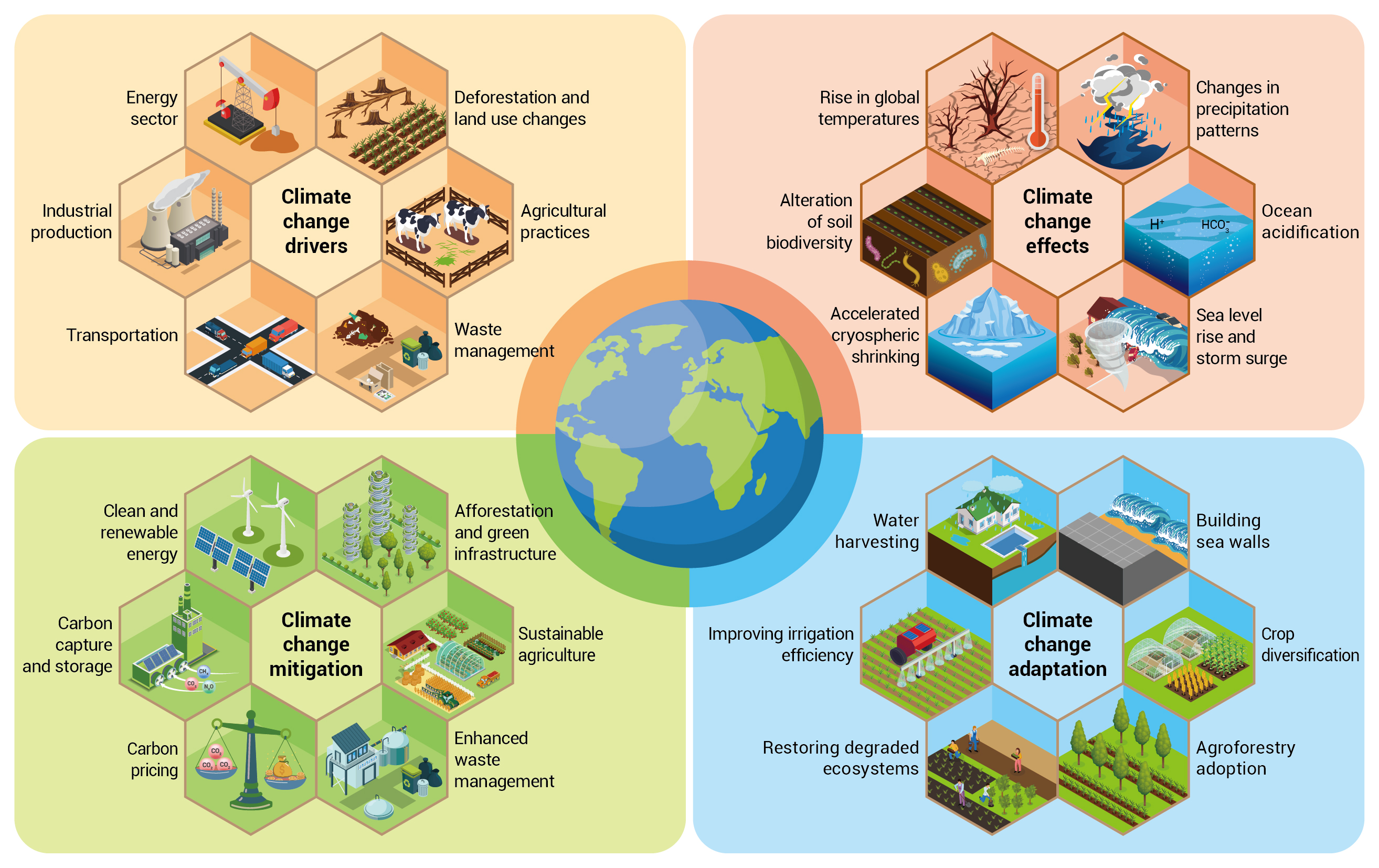Earth’s oceans may have undergone a fundamental shift, study says – Euronews.com

Global Ocean Temperatures Reach Critical Tipping Point, Threatening Sustainable Development Goals
A 2023 report indicates that the Earth’s oceans experienced an unprecedented surge in marine heatwaves, setting new records for intensity, duration, and geographic scope. With 96 percent of the ocean surface affected, scientists warn that this may signal a fundamental shift to a new, hotter state, posing a direct threat to the achievement of the United Nations’ Sustainable Development Goals (SDGs), particularly SDG 13 (Climate Action) and SDG 14 (Life Below Water).
Scientific Analysis of the Marine Heatwave Phenomenon
Contributing Factors and Unexplained Anomalies
Research conducted by scientists from China, the USA, and Thailand identified several key drivers behind the extreme warming. However, these factors alone do not fully account for the unprecedented scale of the temperature increase observed in 2023.
- El Niño: The onset of the El Niño weather pattern in 2023 facilitated greater heat absorption by the ocean.
- Atmospheric Conditions: Reduced cloud cover led to increased solar radiation reaching the ocean surface.
- Wind Patterns: Weaker winds diminished the cooling effect of evaporation.
- Ocean Currents: Changes in ocean circulation patterns also contributed to the warming.
A concerning hypothesis emerging from the data suggests that heat in the world’s oceans may be accumulating exponentially, a trend that would contradict current climate models and significantly complicate efforts under SDG 13.
The Call for Enhanced Research and Monitoring
The scientific community has issued a strong call for increased investment in research to understand the mechanics of ocean warming. While some researchers caution that it is premature to declare a permanent “new normal,” there is consensus on the need for continued monitoring. This aligns with SDG 17 (Partnerships for the Goals), which emphasizes global collaboration to address sustainability challenges. As stated by Australia’s Commonwealth Scientific and Industrial Research Organisation (CSIRO), failing to measure, monitor, and model our future Earth leaves humanity unprepared for dire consequences to food, health, and security.
Widespread Implications for Global Sustainability
Direct Threats to SDG 14: Life Below Water
Prolonged increases in ocean temperatures are catastrophic for marine ecosystems, directly undermining the targets of SDG 14. The primary impacts include:
- Biodiversity Loss: Mass die-offs and forced migrations of marine species disrupt ecosystems and food webs.
- Coral Reef Collapse: Marine heatwaves trigger mass coral bleaching events, threatening the collapse of these vital habitats.
- Weakened Carbon Sequestration: The loss of coral reefs hinders the ocean’s ability to sequester carbon, creating a negative feedback loop that accelerates climate change and works against SDG 13.
- Ecosystem Disruption: Warmer waters can alter breeding cycles and encourage the proliferation of harmful algal blooms and invasive species like jellyfish.
Cascading Effects on Climate, Weather, and Human Well-being
The consequences of ocean warming extend far beyond marine environments, creating cascading effects that threaten numerous other SDGs.
- Climate and Weather Destabilization: The ocean’s compromised ability to regulate heat hampers the prediction of extreme weather events. The 2023 Storm Daniel, which was made 50 times more likely by high sea surface temperatures, resulted in nearly 6,000 deaths, highlighting severe risks to SDG 3 (Good Health and Well-being) and SDG 11 (Sustainable Cities and Communities).
- Terrestrial Impacts: Accelerated warming on land, driven by hotter sea breezes, leads to more intense droughts, heatwaves, and wildfires, directly impacting SDG 15 (Life on Land).
- Food Security: The disruption of marine ecosystems threatens the viability of global fisheries and aquaculture, jeopardizing progress towards SDG 2 (Zero Hunger) and threatening the livelihoods of coastal communities, which relates to SDG 1 (No Poverty).
Conclusion: An Urgent Mandate for Climate Action and Global Cooperation
The potential for the Earth’s oceans to transition to a permanently hotter state represents a grave threat to planetary stability and the global sustainability agenda. This phenomenon jeopardizes the foundational goals of SDG 13 (Climate Action) and SDG 14 (Life Below Water), with severe repercussions for health, food security, and terrestrial ecosystems. The findings underscore the critical need for a dual approach: immediate and drastic reductions in greenhouse gas emissions, coupled with sustained international scientific cooperation as championed by SDG 17, to better model, predict, and adapt to our planet’s changing climate.
SDGs Addressed in the Article
- SDG 14: Life Below Water – The article’s central theme is the unprecedented rise in ocean temperatures and its devastating effects on marine ecosystems, coral reefs, and marine life.
- SDG 13: Climate Action – The article directly links marine heatwaves to global warming and climate change, discussing the role of El Niño, reduced cloud cover, and the need to reduce GHG emissions. It also highlights the impact on extreme weather events.
- SDG 11: Sustainable Cities and Communities – The article mentions the deadly impact of climate-related disasters on human populations, specifically citing Storm Daniel, which was intensified by high sea surface temperatures and resulted in thousands of deaths.
- SDG 2: Zero Hunger – The text points to the negative impacts of marine heatwaves on “fisheries, aquaculture,” and raises concerns about “future food…security,” which are directly related to food production systems.
- SDG 3: Good Health and Well-being – The article notes the thousands of deaths caused by an intensified storm and concludes by mentioning the “dire consequences for our future food, health and security.”
Specific SDG Targets Identified
-
SDG 14: Life Below Water
- Target 14.2: “By 2020, sustainably manage and protect marine and coastal ecosystems to avoid significant adverse impacts… and take action for their restoration.” The article extensively discusses the failure to meet this target, highlighting that marine heatwaves cause “catastrophic for marine ecosystems, triggering mass die-offs or migrations of species” and increase the chances of “coral reef collapse.”
- Target 14.3: “Minimize and address the impacts of ocean acidification…” While not mentioning acidification directly, the article focuses on the related stressor of ocean warming. The call to “dedicate more research to the mechanics of ocean warming” aligns with the scientific cooperation aspect of this target.
- Target 14.a: “Increase scientific knowledge, develop research capacity…” The article repeatedly emphasizes this need, quoting scientists who state, “it is critical that we also continue to measure, monitor and model what our future Earth is going to be like.”
-
SDG 13: Climate Action
- Target 13.1: “Strengthen resilience and adaptive capacity to climate-related hazards and natural disasters in all countries.” The article provides a clear example of a climate-related hazard in Storm Daniel, which was “made 50 times more likely and 50 per cent more intense by high sea surface temperatures,” demonstrating the increasing threat from such events.
- Target 13.2: “Integrate climate change measures into national policies, strategies and planning.” The article’s conclusion, which stresses the urgent need to “reduce our GHG emissions” and prepare for future impacts, directly supports the integration of climate action into planning.
-
SDG 11: Sustainable Cities and Communities
- Target 11.5: “By 2030, significantly reduce the number of deaths and the number of people affected… caused by disasters…” The article provides a specific data point for this target by mentioning that “Storm Daniel in 2023, which killed nearly 6,000 people,” was exacerbated by ocean warming.
-
SDG 2: Zero Hunger
- Target 2.4: “By 2030, ensure sustainable food production systems and implement resilient agricultural practices…” The article implies a threat to this target by warning of “devastating impacts on biodiversity, fisheries, aquaculture,” which are crucial components of global food systems. The final paragraph explicitly mentions a threat to “future food… security.”
Indicators for Measuring Progress
-
Indicators for SDG 13 & 14
- Sea Surface Temperature (SST): The article provides specific measurements that can be used as indicators, such as the Mediterranean SST hitting “26.01°C” and temperatures being “3-4°C higher than average” or “4°C warmer than average.” These directly measure the physical manifestation of ocean warming.
- Geographic Extent and Duration of Marine Heatwaves: The article states that “96 per cent of the ocean surface [was] affected” and many heatwaves were “lasting well over a year.” These metrics serve as direct indicators of the scale and persistence of the problem.
- Intensity and Frequency of Extreme Weather Events: The article provides a quantifiable indicator by noting that Storm Daniel was “made 50 times more likely and 50 per cent more intense” due to high SSTs.
-
Indicators for SDG 14
- Marine Ecosystem Health: While not providing a single number, the article implies indicators through descriptions of ecosystem status, such as “mass die-offs,” “coral reef collapse,” disruptions to “breeding cycles,” and “blooms of harmful algae.” These qualitative observations serve as indicators of ecosystem degradation under Target 14.2.
-
Indicators for SDG 11
- Number of Deaths Attributed to Disasters: The article provides a direct indicator for Target 11.5 by stating that Storm Daniel “killed nearly 6,000 people.”
SDGs, Targets, and Indicators Analysis
| SDGs | Targets | Indicators |
|---|---|---|
| SDG 14: Life Below Water |
14.2: Protect marine and coastal ecosystems. 14.a: Increase scientific knowledge and research capacity. |
– Descriptions of ecosystem health (e.g., “mass die-offs,” “coral reef collapse”). – Sea surface temperature anomalies (e.g., “3-4°C higher than average”). – Geographic extent of heatwaves (“96 per cent of the ocean surface affected”). – Duration of heatwaves (“lasting well over a year”). |
| SDG 13: Climate Action |
13.1: Strengthen resilience to climate-related hazards. 13.2: Integrate climate change measures into policies. |
– Increased likelihood of extreme weather (“made 50 times more likely”). – Increased intensity of extreme weather (“50 per cent more intense”). – Call to reduce GHG emissions. |
| SDG 11: Sustainable Cities and Communities | 11.5: Reduce deaths and economic losses from disasters. | – Number of deaths from a specific disaster (“Storm Daniel… killed nearly 6,000 people”). |
| SDG 2: Zero Hunger | 2.4: Ensure sustainable and resilient food production systems. | – Mention of impacts on “fisheries, aquaculture.” – Mention of threats to “future food… security.” |
| SDG 3: Good Health and Well-being | (Implied) Strengthen capacity for early warning and risk reduction of national and global health risks. | – Mention of threats to “future… health and security.” – Deaths from climate-related disasters. |
Source: euronews.com

What is Your Reaction?
 Like
0
Like
0
 Dislike
0
Dislike
0
 Love
0
Love
0
 Funny
0
Funny
0
 Angry
0
Angry
0
 Sad
0
Sad
0
 Wow
0
Wow
0
















































































